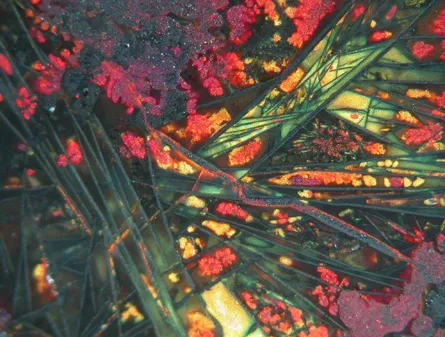Serbian site may have hosted first copper makers
Finds intensify debate over Old World origins of metal production
An archaeological site in southeastern Europe has shown its metal. This ancient settlement contains the oldest securely dated evidence of copper making, from 7,000 years ago, and suggests that copper smelting may been invented in separate parts of Asia and Europe at that time rather than spreading from a single source.

The find extends the known record of copper smelting by about 500 years, an archaeological team headed by Miljana RadivojeviÄ and Thilo Rehren of University College London reports in an upcoming Journal of Archaeological Science. The pair were joined by Serbian researchers, led by Dušan Šljivar of the National Museum Belgrade, and German scientists directed by Ernst Pernicka of the University of Tübingen.
Chemical and microscopic analyses of previously unearthed material from Serbia’s Belovode site have identified pieces of copper slag, the residue of an intense heating process used to separate copper from other ore elements. The raw material came from nearby copper-ore deposits in Serbia or Bulgaria, they add.
“Our finds provide the earliest secure dates for copper smelting and indicate the existence of different, possibly independent centers of invention of metallurgy,” Rehren says. Metallurgy is the process of extracting metals from ore in order to create useful objects.
Large numbers of copper artifacts have been found at southeastern European sites dating to more than 6,000 years ago, Rehren notes.
His proposal challenges a longstanding view that copper smelting spread to Europe after originating in or near the Fertile Crescent region of what’s now southern Iran. Archaeologists have dated copper smelting in the Middle East to about 6,500 years ago.
Although Belovode now stands as the world’s oldest known copper-smelting site, that status probably won’t last, remarks archaeologist Benjamin Roberts of the British Museum in London. “It’s likely we’ll see copper-smelting evidence at least contemporary with Belovode from the Fertile Crescent once research programs are in place at well-excavated sites,” he predicts.
Copper smelting may have originated in what’s now Turkey, comments archaeologist Christopher Thornton of the University of Pennsylvania in Philadelphia. By 10,000 years ago, people living there were making beads and other ornaments from copper ore and heating the ore at low temperatures to make it more pliable, he says. Scattered evidence of early smelting in that region has yet to be thoroughly studied.
Roberts and Thornton agree that copper making was probably invented in one spot, either in Turkey or the Middle East.
Rehren’s group is now examining possible copper slag from sites in Turkey and Iran that date to 7,000 years ago or more.
Radiocarbon dates for animal bones excavated at Belovode indicate that the site was occupied from 7,350 to 6,650 years ago. Jewelry and other Belovode finds come from southeastern Europe’s ancient VinÄa culture, known for having used copper vessels and other metal items.
Chemical analyses of metallic-looking bits from Belovode identified five pieces of copper slag. Large amounts of iron, manganese, zinc and cobalt in this material likely derived from smelted copper ores, Rehren’s team says. Differences in the concentration of elements across samples indicate that each was produced in a separate smelting event. Slag pieces were laced with ash from wood that presumably had been burned to create smelting temperatures of about 1,100° Celsius.
Microscopic studies of slag pieces revealed glassy areas and crystallized metal oxides that had formed during a process of heating the material until it liquefied, followed by cooling.
A drop of once-molten metal found in a Belovode house contains pure copper, the researchers add.
Lead-isotope ratios of the Belovode slag and the copper drop link them to ore deposits in Serbia and Bulgaria.
No smelting chambers, such as elongated ceramic cylinders recovered at later Copper Age sites in southwestern Asia, have been found at Belovode. Vinca residents may have dug pits for copper smelting, the scientists speculate.







